Trello Kanban Guide for Software Development
Wondering how Trello kanban boards can assist your software development? Then, you’ve come to the right place! Let’s take a look.
Even if you’re an experienced project manager going back to the basics or a beginner just taking their very first steps in agile methodology, Trello is bound to take you by the hand to successful project completion. How many times has a meeting started with “What everybody is working on?” 🙄. Every single member of your team needs to know exactly what everyone is working on at any given time.
Today, everybody is a project manager. From organizing your daughter’s birthday party to marketing a new app for a multi-million dollar company, you need to be able to visualize your data and limit time for project completion. That’s where Trello Kanban comes into the frame. With a Trello Kanban plugin like Blue Cat Reports, you get instant access to fully customizable and beautiful reports for your data to stay on top of your project management workflow.
In this guide, you’ll learn:
- What Is Kanban
- Is Trello a Kanban Board
- How to Use Trello Kanban for Software Development
- Kanban Trello Best Practices
- Your Trello Kanban Checklist
Let’s get started!
What Is Kanban
Kanban is a methodology widely spread in the software development industry that has its roots back in 1940. Taiichi Ohno, a Toyota engineer, invented the Kanban system to solve an inventory management problem the company was facing. Kanban, translated from Japanese, means “signboard”. It was later popularized by David. J Anderson’s book “Kanban: Successful Evolutionary Change For Your Technology Business”.
Kanban aims to visualize work, limit time consumed for specific tasks, and maximize efficiency within a team. It helps reassure quality for each stage of a software development process, and as an agile system, it can adjust and grow in turbulent environments.
Practically, Kanban uses either physical or digital boards to visualize tasks, along with columns and cards to commit a team to the work that needs to be done on an ongoing basis. One of the most common examples of Kanban-based projects are the “to-do”, “in progress,” and “done” lists.
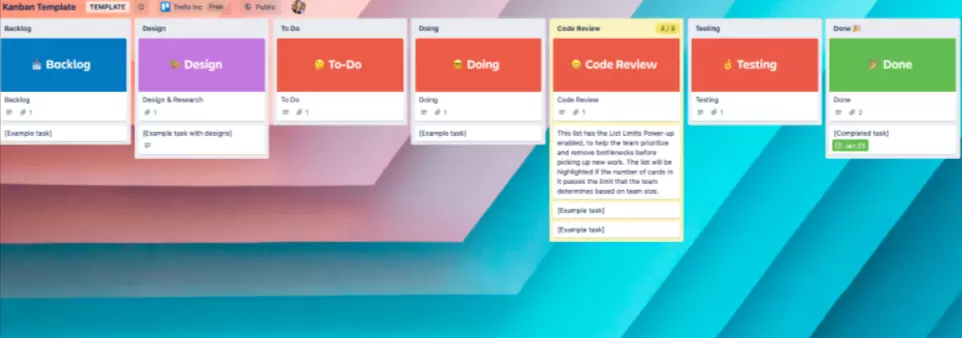
Is Trello a Kanban Board
Agile Trello is one of the most popular project management apps based in its core on Kanban boards. Essentially, it’s a visual collaboration platform, where every task is displayed in a clean and precise way so that nothing gets lost in the pile of activities. It is aimed at teams or individuals that want a practical yet uncomplicated tool to organize their projects and create recurring tasks to avoid repeating the same actions.
Trello is based on Kanban boards, lists, and cards. A Trello Kanban example is The Telegraph. Its Trello kanban boards map its digital content process, with each card representing an article. As the articles get researched, written, edited, approved, and published, they move inside the board’s lists. That way, everyone is aware of the content produced and each phase of the final publication. No need for extensive meetings or disruptive calls. Just simple drag and drop!
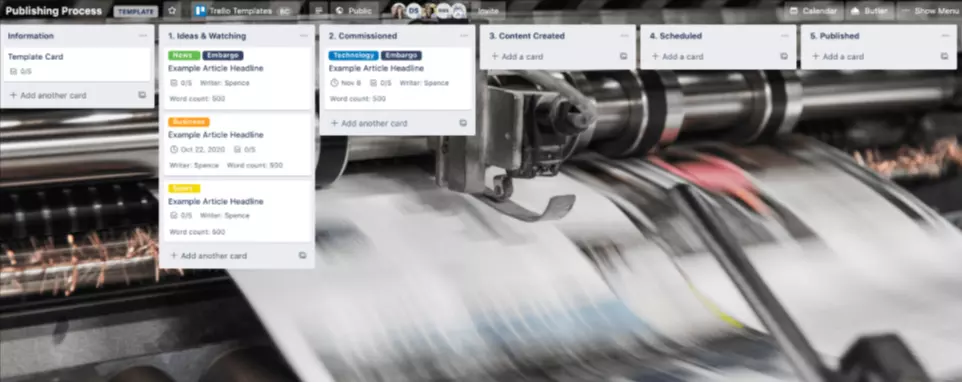
How to Use Trello Kanban for Software Development
With Trello, you can take your software development game to the next level. No matter how big or small your project is, you’re bound to fail without the proper management. Let’s review the stages of creating a simple Trello web development board for your process.
1. Set up your Trello visual board
Once you log into the platform, simply click on the “Create new board” icon, and you’ll be prompted to edit your new board’s title, background image, and visibility status. To make things easier for you, Trello even offers Kanban board templates, where you can choose between hundreds of existing templates from the Trello community. Doesn’t get easier than that!
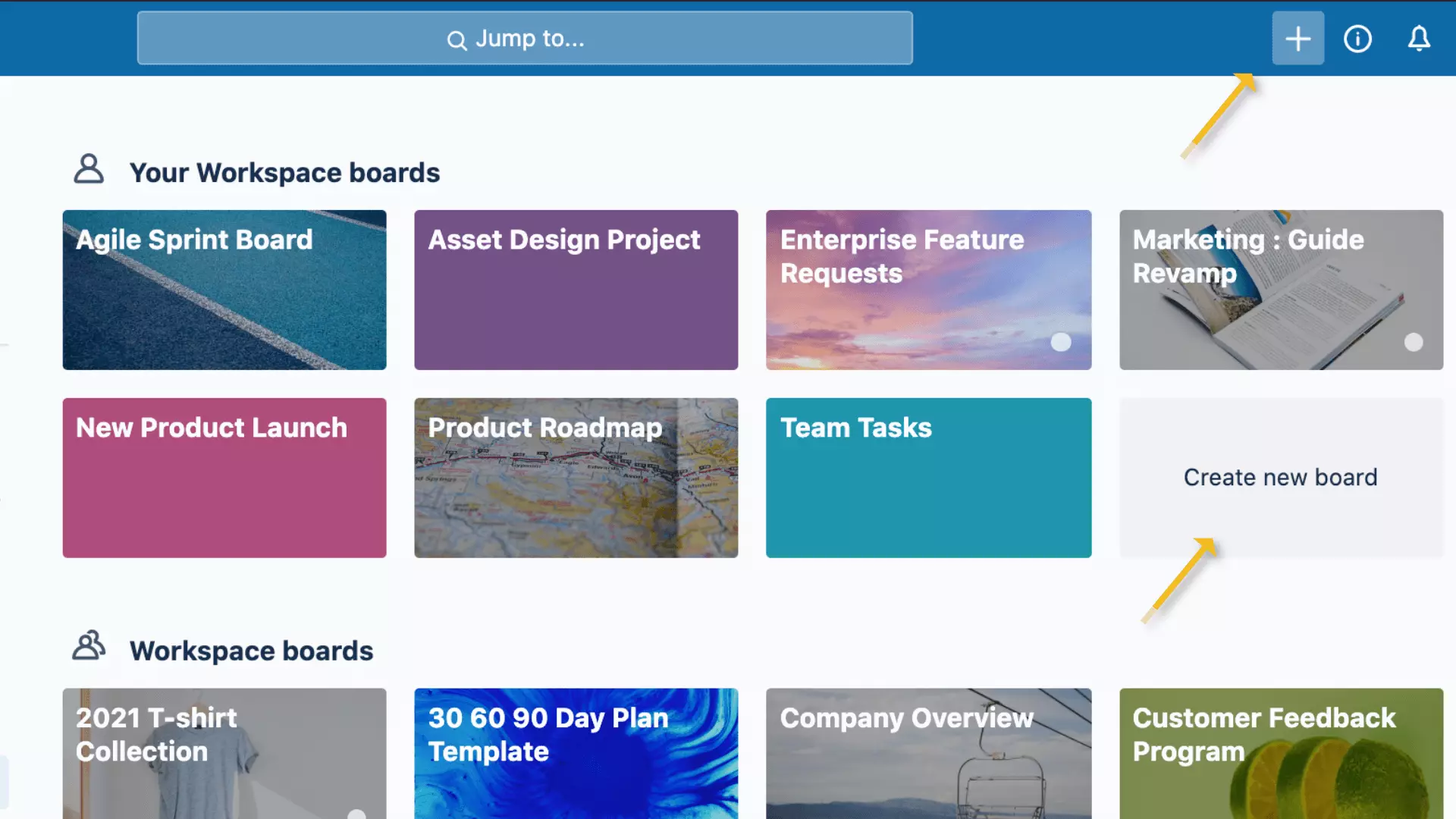
Source: Trello
2. Populate your board with lists
Next, you want to fill your Kanban board with lists. An efficient way to do that is by considering the different stages of your software development. We suggest trying:
- A “To-Do” list - All the features and tasks waiting for development.
- A “Development” list - Tasks that have already been assigned to developers or engineers and are being worked upon.
- A “Quality Assurance” list - Complete features awaiting review.
- A “Deployed” list - Approved features incorporated in the application.
For a bonus, we suggest using a “First Timer” list, with instructions for newly added members so that they can adjust with the board’s flow. You can even opt for an “Ideas” list, where your team can brainstorm or store all the ideas that haven’t yet been assigned or set in motion.
To create a new list, simply click on the “Add List” button, give it a name, and you’re good to go. Based on the structure above, your board should look like this:
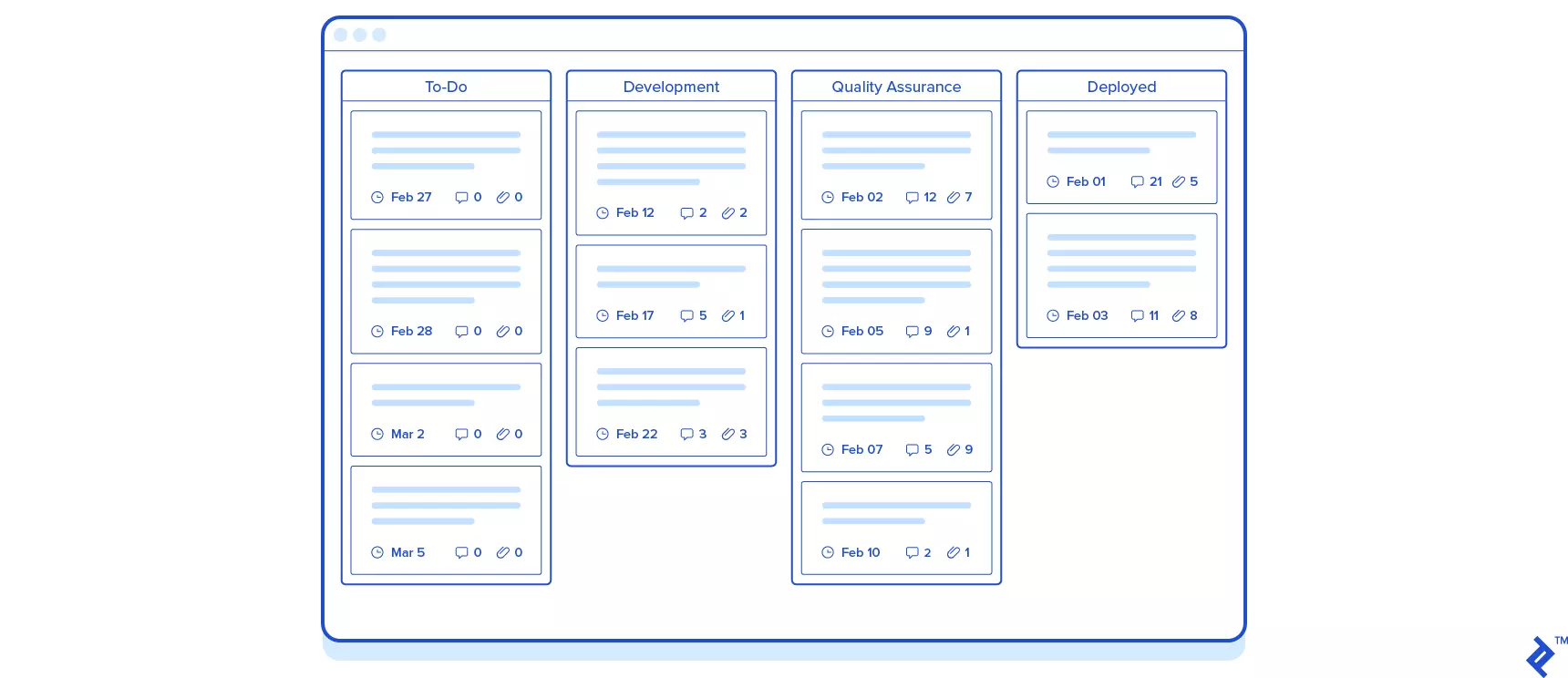
3. Turn your tasks into cards
Now, it’s time to get down to the actual tasks that need to be created and assigned to different lists. Remember, each task represents a card; that’s the only way a Trello Kanban board can work for your whole team. Simply click on the “Add a card” button to create new cards, add the developer’s name to which the task will be assigned, or even due dates and descriptions.
For smooth workflows and an even more pleasing interface, you can use colored labels to add the extra definition to your cards. In addition, you can create checklistswithin each card, invite team members to work on specific tasks, attach useful files and quickly move cards across lists with a simple drag and drop.
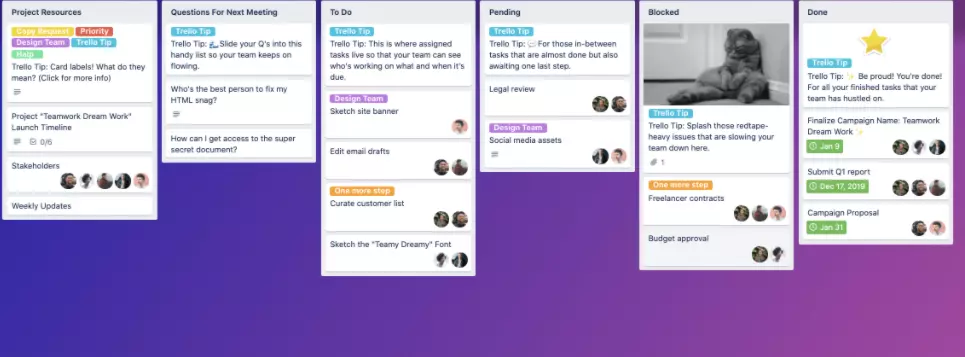
Kanban Trello Best Practices
That’s the big picture of how you can use Trello for software development. However, we can’t just send you out in the Kanban world without pointing out some applied and successful best practices that every project manager should know:
1. Limit your work in progress (WIP)
Multi-tasking is not your best ally in software development. **A developer should focus on one project at a time; otherwise, there might be delays and confusion.**However, that doesn’t mean you shouldn’t assign them different tasks because there might be gaps in their workflow due to waiting for someone or something. The golden ratio is to assign a reasonable amount of tasks, usually 3-5 tasks at a time, to avoid creating chaos.
To give you a clearer view, in our previous example of software development lists, the ideal limits for each list should look like this:
- To-Do list - Unlimited
- Development list - Up to 3 tasks per developer
- Quality Assurance list - Up to 3 tasks per quality engineer
- Deployed list - Unlimited
2. Make your policy processes explicit
As we discussed before, your whole team needs to be on the same page on how each board works, how procedures are done, and what it means altering cards inside different lists. Therefore, we highly suggest creating an additional list with instructions to educate the new and remind the old members of how things work or creating short descriptions inside each column to provide clarity.
3. Report your data
Your project management efforts will be in vain if you don’t support them with the right reporting tools. Trello offers a variety of power-ups that help advance your workflow management. Blue Cat Reports is the top-level view of your Kanban boards, fully customizable and beautifully designed. You can generate in-depth monthly or annual reports of every card on every board, visualize them with charts/pies/bars and email them to your colleagues. With Blue Cat, you’re able to answer the following questions:
- How much work is your team getting done
- How long does project completion take
- Who’s getting more work done
- Which task required the longest to complete
Other power-ups you can opt for are:
- Time In List - Measure how long cards have been in your lists. Identify performance and weak points in your workflow.
- Corrello - Create burndown, CFD, and cycle time charts & reports.
- Kanban WIP Limit- Set WIP limits for each list and ensure that tasks are being completed before new ones are added.
This way, you’ll be able to map your next project management framework and make the right decisions around time, workforce, and resources.
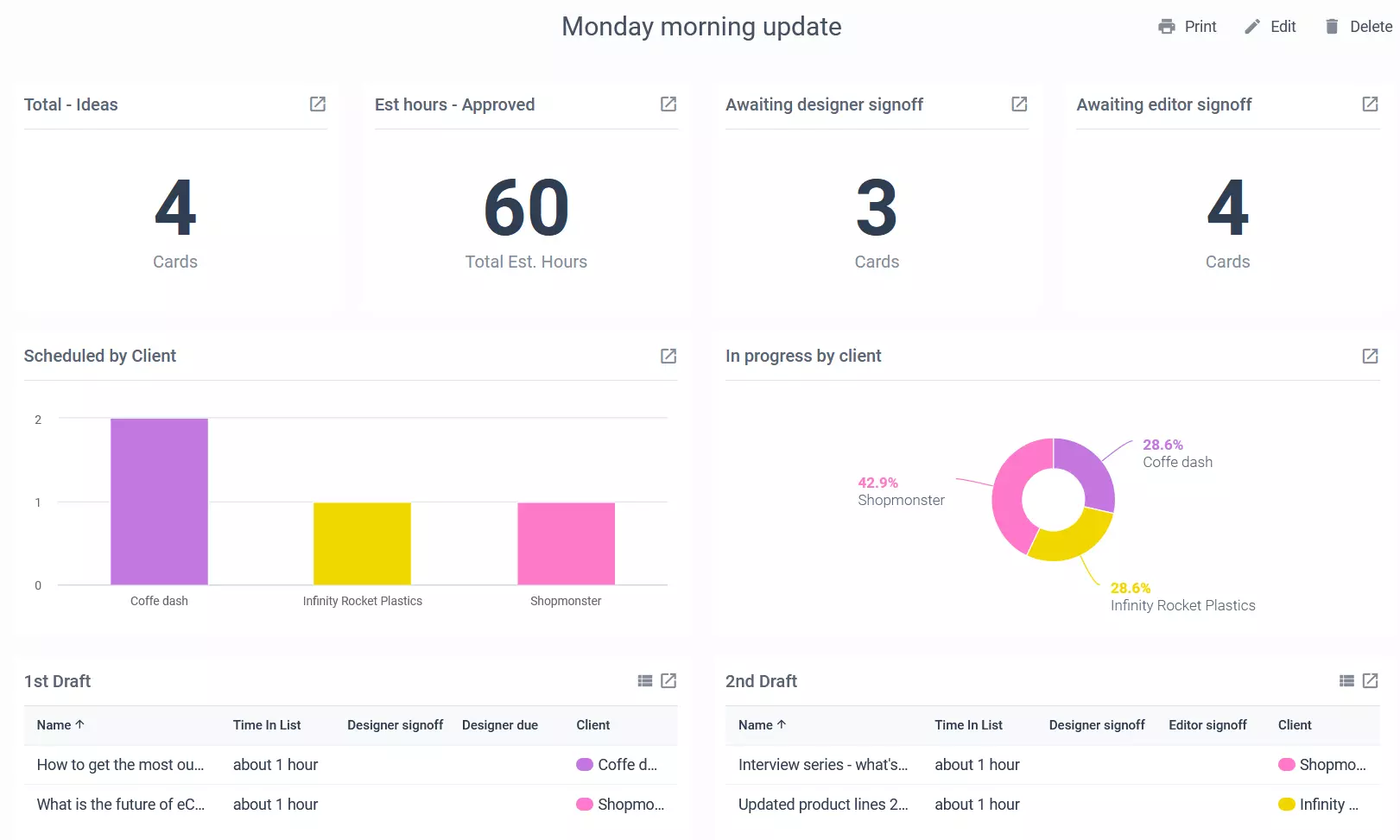
Your Trello Kanban Checklist
So you get it. If you want to transform how your team collaborates for software development, your best step towards success is investing in a Kanban system like Trello. What sets the Kanban method apart? Its organizational bliss that requires no additional transitions from your current workflows.
By experimenting with your Trello Kanban boards, you’ll find that you can easily improve each project’s productivity, efficiency, and visibility. To get going:
- Create your Trello Kanban Board
- Add lists based on different project stages
- Create cards based on tasks & assign them to team members
- Customize your cards with labels, checklists, and due dates
- Apply tactics like WIP and policy process specification
- Report your data with the right tool
Final Thoughts
Project management can be challenging and stressful.
It’s your job as a project manager to ensure that the proper tasks are prioritized and that your team has a clear image of every step of the process. Employing a Kanban-based framework to structure your project management workflow, combined with the proper tools like Blue Cat Reports, will give you a competitive advantage to faster and more efficient results.